Dong Kingman: Art (and Joy) of the City
A plein air painter paints the megalopolis
I am hesitant at times to showcase the work of an artist whose subjectivity, he/her/they puts into their art, inhibits the truth of a scene or story. Additionally, I am uncertain that, if by painting en plein air, it lacks a sufficient narrative, that’s also contrary to (my principles for) effective visual journalism. I am willing to make an exception in the case of Dong Kingman…a master watercolorist with a unique vision of the world. He made art that displays astute observational skill and picture-making ability, especially when it comes to cities.
Dong Kingman (1911-2000), born Dong Moy Shu, in Oakland, California was the son of Chinese immigrants. At the age of five and a half, he and his family moved to Hong Kong. As a boy he excelled in art, particularly Chinese brush painting. Kingman returned to Oakland in his late teens to begin his formal art training, which included the study of European and American art.
Kingman’s art and philosophy of life were influenced by both Eastern and Western sensibilities, which he applied to his first major commissions. This became evident through his work for the WPA in 1936, where he created over 300 paintings and other public art, that show a stylistic opposition to typical Depression era aesthetics.
In 1942 he won a Guggenheim Travel grant that allowed him to tour the country. It was during these travels that he arrived in New York. It would be a muse for him, a city that was both exhilarating and overcrowded. What he chose to paint and how he composed them were his response to this rowdy city. His paintings managed to maintain a sense of organization and optimism, intimacy, and anonymity.
In 1946, Kingman returned with his growing family to New York, to teach at Columbia University. The city would continue to influence him and shape his still emerging style. His paintings became emotional reflections of his experiences, depicting skyscrapers, birds, store signage, struggling trees seeking light, elevated trains, monuments, construction sites, bridges, and water towers. Oddly there are not a lot of people populating these paintings.
Kingman’s compositions are characterized by their complexity and reminiscent of Cubism. They are lyrical like a symphony. They seamlessly integrate his observations with a desire to create a beautiful narrative, guiding the viewer’s eye through the painting. (think: George Gershwin’s Rhapsody in Blue)
In 1954, Kingman embarked on a world tour as a cultural ambassador for the U.S. State Department, allowing him to indulge in his love for travel, cities, and diverse cultures. Upon his return, he chronicled his adventures in a 40-foot long scroll, which was published in LIFE magazine…a remarkable example of visual journalism.
Eventually settling in San Francisco, Dong Kingman continued to create imaginative, joyful and well-constructed paintings depicting urban life. His art shouldn’t be dismissed as trivial; it reflects his profound empathy for cities, and that’s significant. The challenges faced by cities today, like San Francisco, are immense. Kingman chose to see them through a lens of magic and enchantment.
all images © Dong Kingman - all right reserved
More to Know:
Dong Kingman’s website
His film art and some published print works
A biography at Illustration History
His widescreen title art for the opening credits of the film 55 Days at Peking.





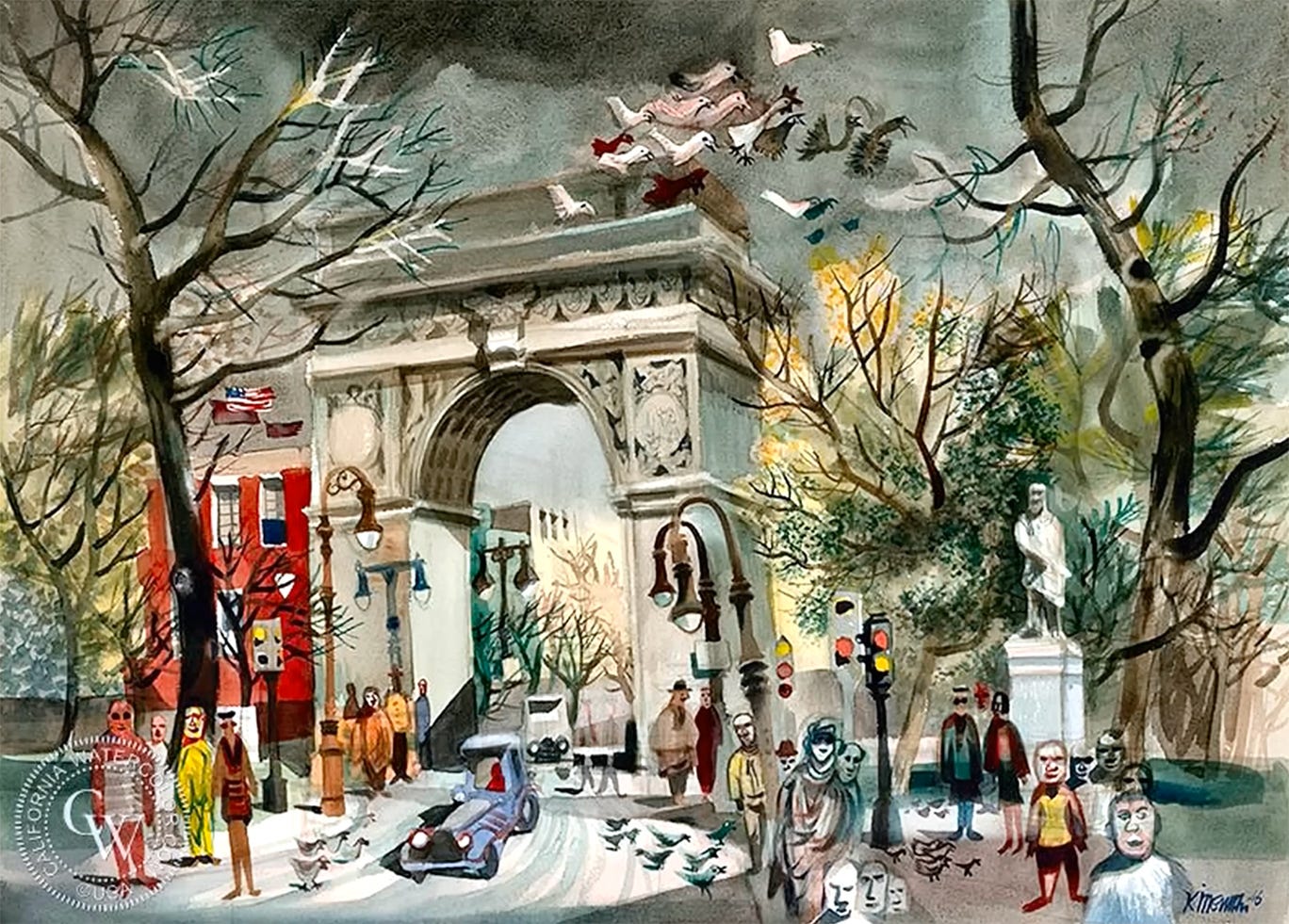

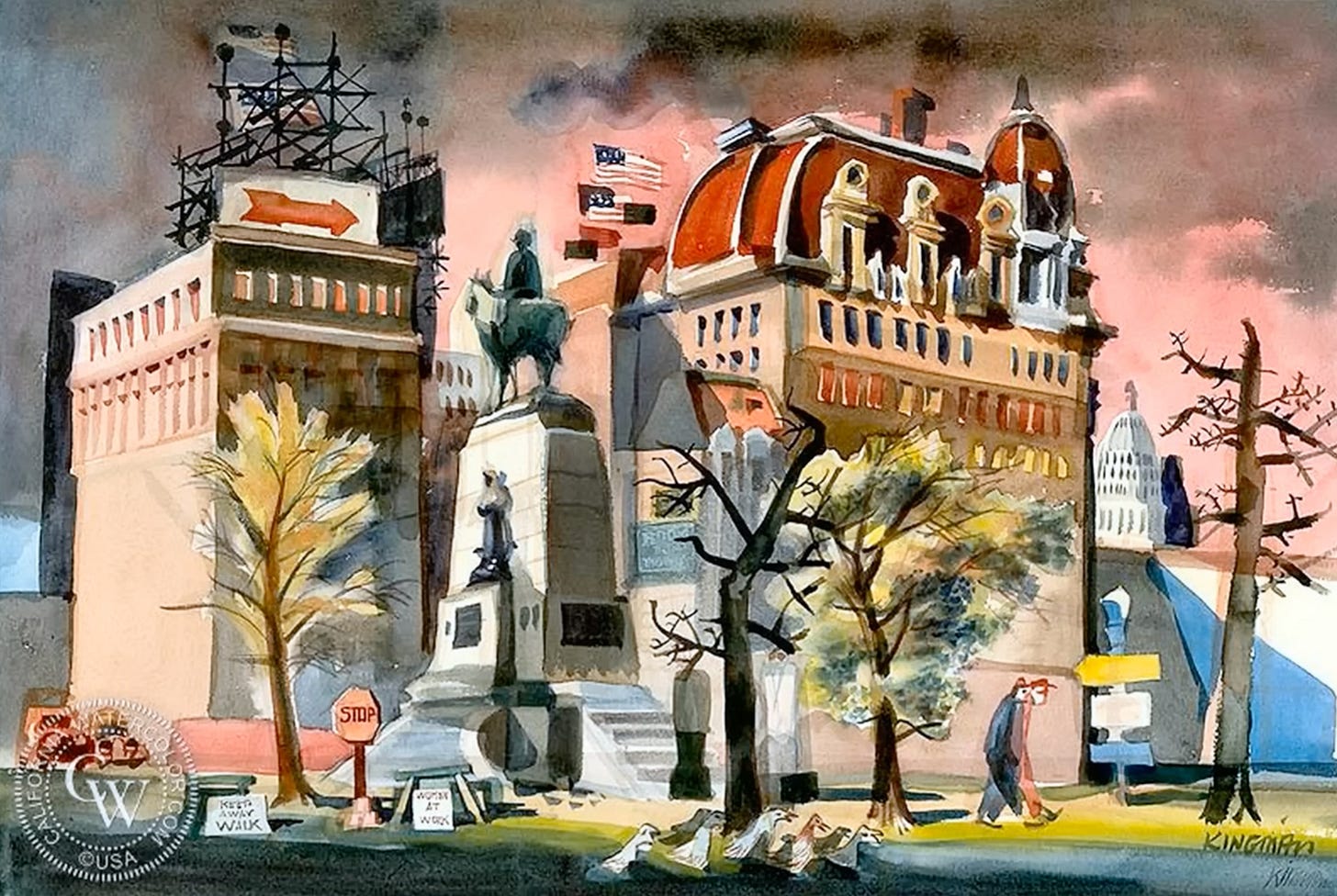
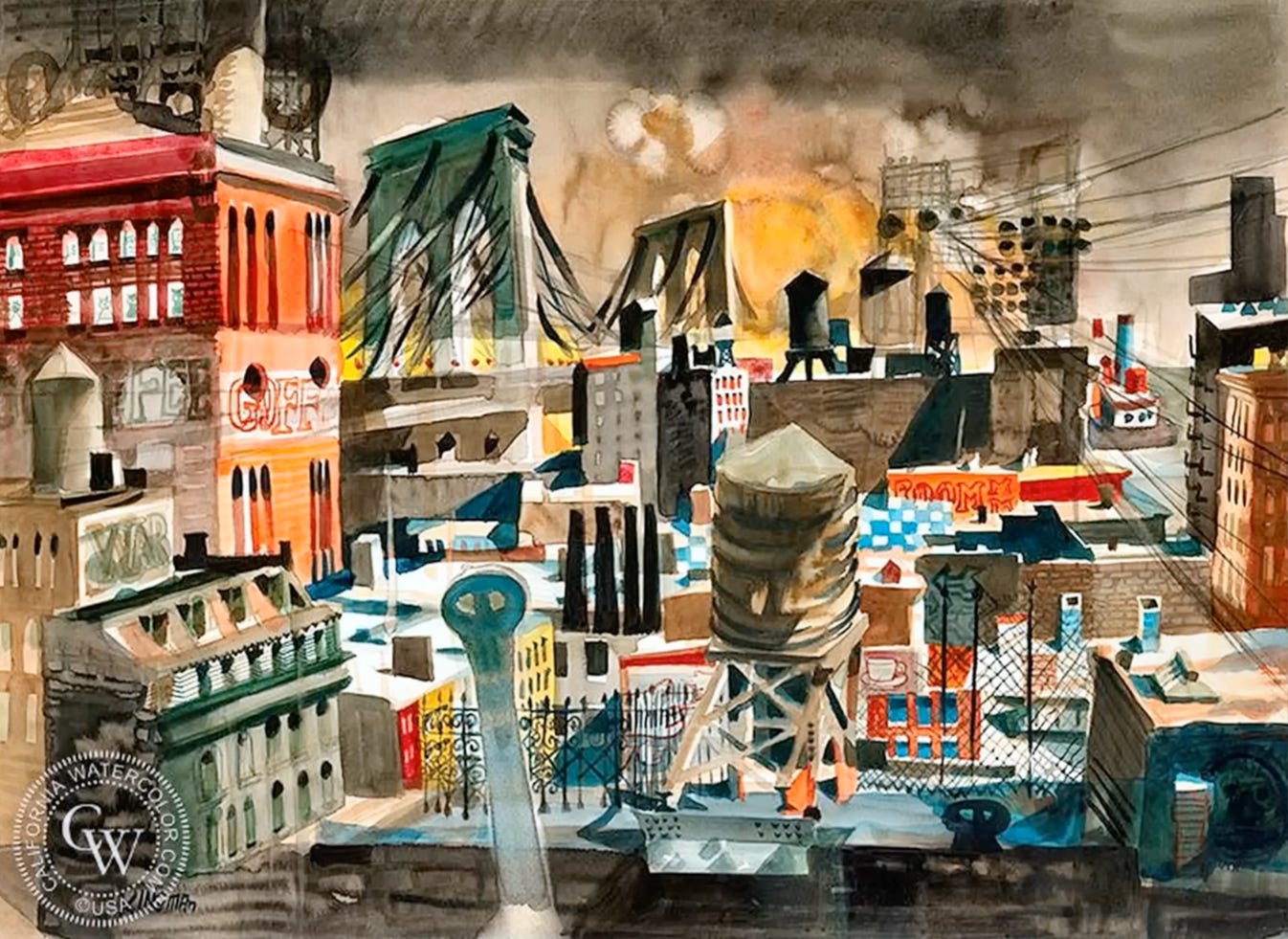

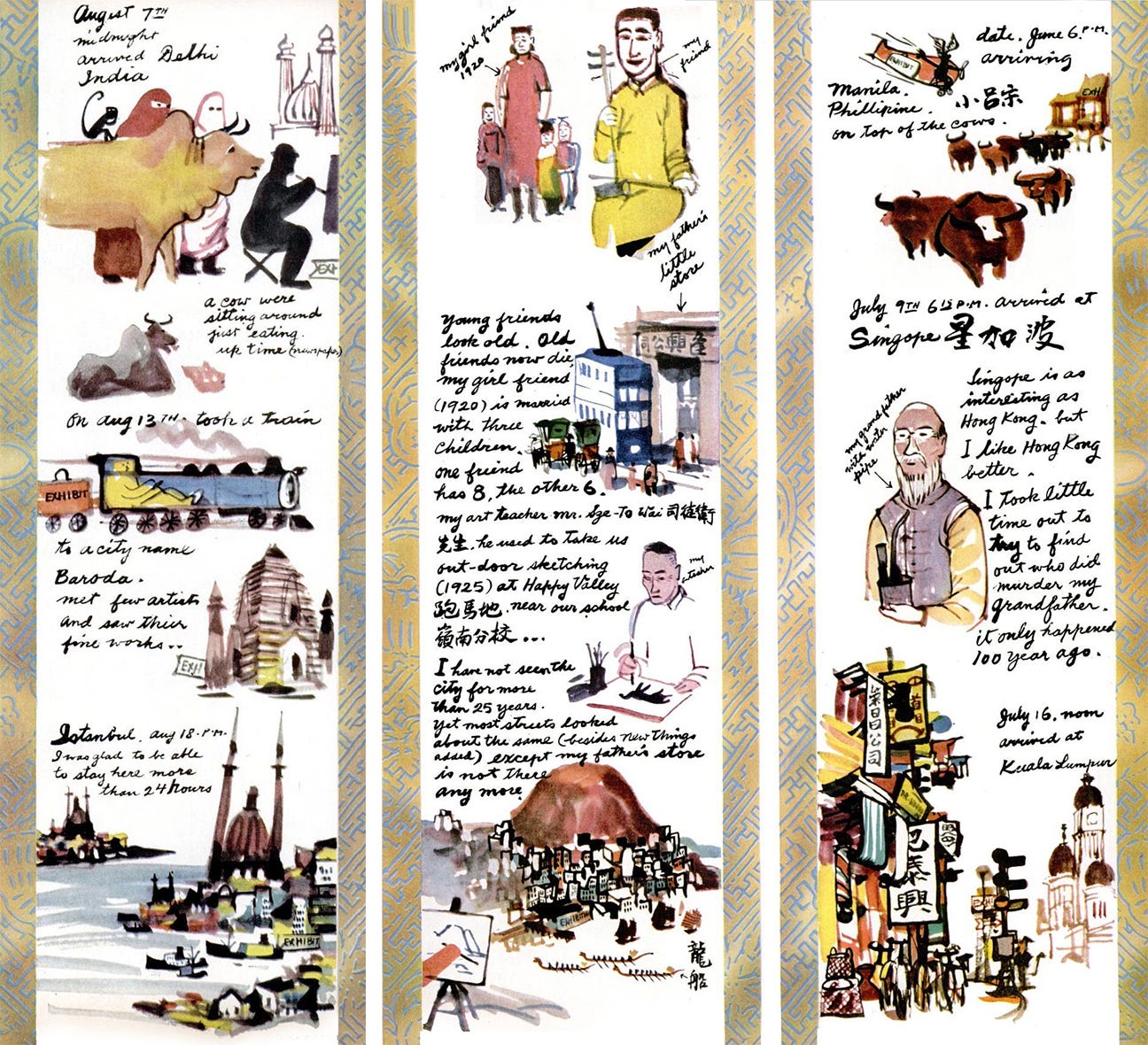
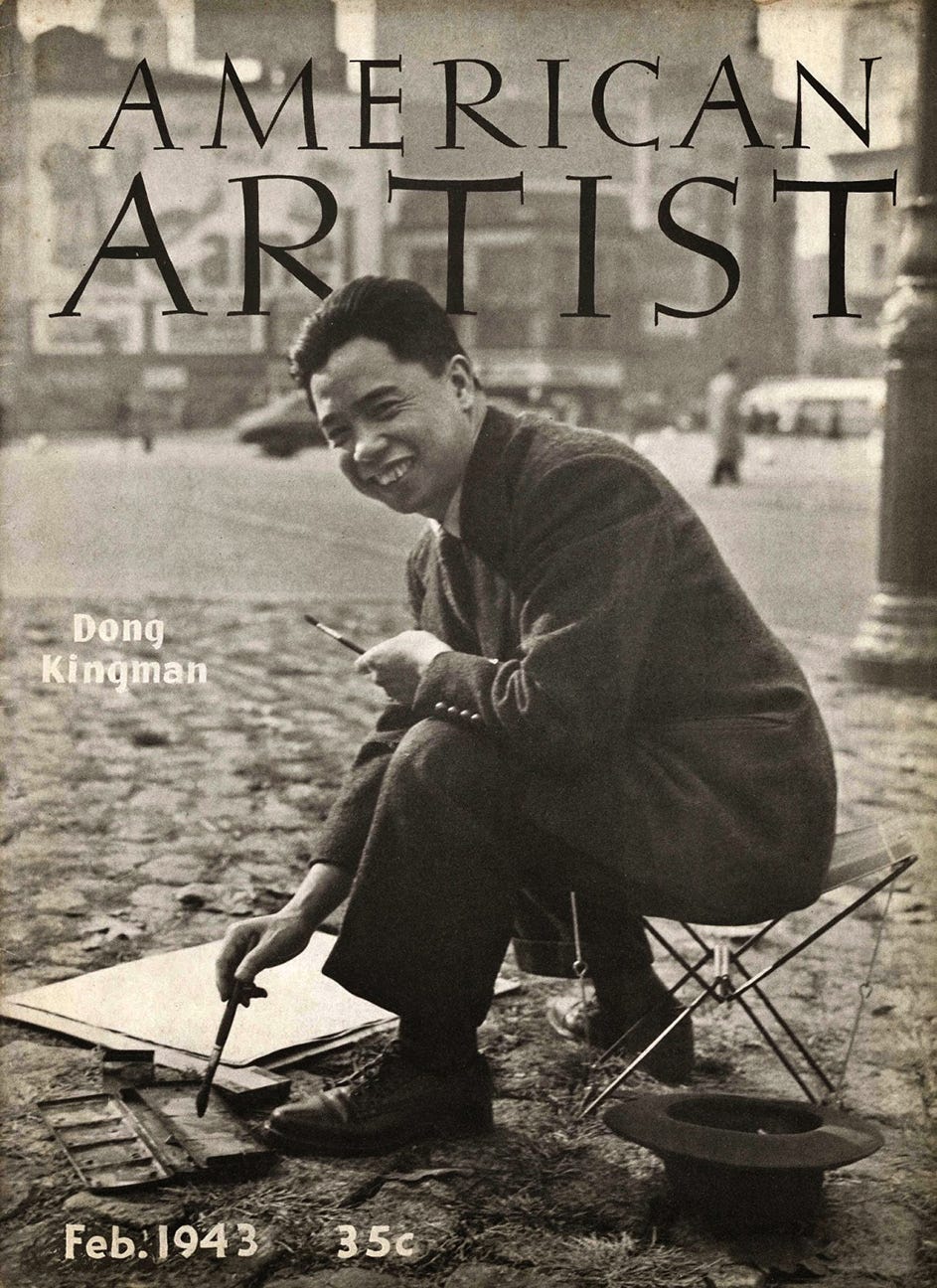
I also think that the SF Chron should bring you back as cultural ambassador.
I'm glad you made the exception to report on Dong Kingman's art. He painted joyously a lot of industrial results! His appealing works make me smile. I agree with your descriptive words of magic and enchantment. We can use more of this in the life !!